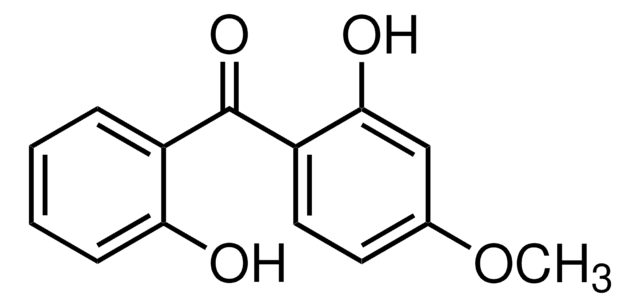D2960000
Dopamine hydrochloride
European Pharmacopoeia (EP) Reference Standard
Synonyme(s) :
2-(3,4-Dihydroxyphényl)éthylamine hydrochloride, 3,4-Dihydroxyphénéthylamine hydrochloride, 3-Hydroxytyramine hydrochloride, 4-(2-Aminoéthyl)-1,2-benzènediol hydrochloride
About This Item
Produits recommandés
Qualité
pharmaceutical primary standard
Famille d'API
dopamine
Fabricant/nom de marque
EDQM
Pf
248-250 °C (lit.)
Application(s)
cleaning products
cosmetics
food and beverages
personal care
pharmaceutical (small molecule)
Format
neat
Chaîne SMILES
Cl[H].NCCc1ccc(O)c(O)c1
InChI
1S/C8H11NO2.ClH/c9-4-3-6-1-2-7(10)8(11)5-6;/h1-2,5,10-11H,3-4,9H2;1H
Clé InChI
CTENFNNZBMHDDG-UHFFFAOYSA-N
Informations sur le gène
human ... ADRB1(153)
Vous recherchez des produits similaires ? Visite Guide de comparaison des produits
Description générale
Application
Conditionnement
Autres remarques
Produit(s) apparenté(s)
Mention d'avertissement
Warning
Mentions de danger
Conseils de prudence
Classification des risques
Skin Sens. 1
Code de la classe de stockage
11 - Combustible Solids
Classe de danger pour l'eau (WGK)
WGK 1
Point d'éclair (°F)
Not applicable
Point d'éclair (°C)
Not applicable
Faites votre choix parmi les versions les plus récentes :
Certificats d'analyse (COA)
It looks like we've run into a problem, but you can still download Certificates of Analysis from our Documents section.
Si vous avez besoin d'assistance, veuillez contacter Service Clients
Déjà en possession de ce produit ?
Retrouvez la documentation relative aux produits que vous avez récemment achetés dans la Bibliothèque de documents.
Les clients ont également consulté
Notre équipe de scientifiques dispose d'une expérience dans tous les secteurs de la recherche, notamment en sciences de la vie, science des matériaux, synthèse chimique, chromatographie, analyse et dans de nombreux autres domaines..
Contacter notre Service technique



![[2-(Methacryloyloxy)ethyl]dimethyl-(3-sulfopropyl)ammonium hydroxide 95%](/deepweb/assets/sigmaaldrich/product/structures/217/219/73c91e1c-0ee4-4b3d-bead-a6dc3d09d1da/640/73c91e1c-0ee4-4b3d-bead-a6dc3d09d1da.png)







